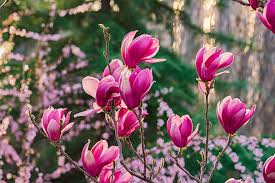# The Harmony of White Egg Orchids and Other Ornamental Plants: A Comprehensive Guide

## Table of Contents
1. **Introduction**
2. **Understanding White Egg Orchids**
– 2.1. Characteristics of White Egg Orchids
– 2.2. Benefits of Growing White Egg Orchids
3. **Choosing Companion Plants**
– 3.1. Factors to Consider
– 3.2. Types of Companion Plants
4. **Creating a Cohesive Garden Design**
– 4.1. Color Harmony
– 4.2. Texture and Foliage
– 4.3. Seasonal Considerations
5. **Popular Companion Plants for White Egg Orchids**
– 5.1. Ferns
– 5.2. Palms
– 5.3. Succulents
– 5.4. Tropical Plants
– 5.5. Flowering Plants
6. **Planting Techniques and Care**
– 6.1. Ideal Growing Conditions
– 6.2. Soil and Potting Considerations
– 6.3. Watering and Fertilizing
7. **Pest Management and Plant Health**
– 7.1. Identifying Common Pests
– 7.2. Natural Pest Control Methods
8. **Designing an Orchid-Focused Landscape**
– 8.1. Vertical Gardens
– 8.2. Container Gardening
– 8.3. Garden Beds and Borders
9. **Maintaining Plant Harmony**
– 9.1. Regular Maintenance Routines
– 9.2. Seasonal Adjustments
10. **The Aesthetic Appeal of Mixed Plantings**
– 10.1. Visual Impact
– 10.2. Creating a Focal Point
11. **Conclusion**
12. **FAQs**
—
## 1. Introduction
Creating a beautiful and harmonious garden is an art that combines various elements of design and plant selection. One of the most captivating combinations is that of the White Egg Orchid (*Phalaenopsis amabilis*) and other ornamental plants. This guide will explore the characteristics of White Egg Orchids, suitable companion plants, and how to create a cohesive garden design that enhances the beauty and health of all plants involved.
## 2. Understanding White Egg Orchids
### 2.1. Characteristics of White Egg Orchids
White Egg Orchids are known for their elegant, long-lasting white blooms and attractive foliage. They are native to Southeast Asia and thrive in tropical conditions. The key characteristics of these orchids include:
– **Flowers**: The striking white flowers can grow up to 4 inches in diameter and are often marked with subtle shades of yellow or pink.
– **Leaves**: The thick, glossy leaves are dark green and provide an attractive backdrop to the blooms.
– **Growth Habit**: These orchids can grow as epiphytes, attaching themselves to trees, or in pots with a suitable growing medium.
### 2.2. Benefits of Growing White Egg Orchids
Growing White Egg Orchids in your garden offers numerous benefits:
– **Aesthetic Appeal**: Their stunning flowers add elegance and beauty to any space.
– **Air Purification**: Like many orchids, White Egg Orchids help purify the air by removing toxins.
– **Diverse Growing Conditions**: They can thrive in various environments, including indoor and outdoor settings.
## 3. Choosing Companion Plants
### 3.1. Factors to Consider
When selecting companion plants for White Egg Orchids, consider the following factors:
– **Light Requirements**: Ensure that the companion plants have similar light needs. White Egg Orchids prefer bright, indirect light.
– **Watering Needs**: Choose plants that require similar watering schedules to maintain consistent moisture levels.
– **Soil Preferences**: Match the soil requirements of the orchids with those of the companion plants.
### 3.2. Types of Companion Plants
Companion plants can be categorized into several types, including:
– **Foliage Plants**: Plants with attractive leaves that provide a lush background.
– **Flowering Plants**: Plants that bloom alongside orchids, adding color and interest.
– **Filler Plants**: Low-growing plants that fill in gaps and create a fuller garden appearance.
## 4. Creating a Cohesive Garden Design
### 4.1. Color Harmony
When designing a garden, color harmony is crucial:
– **Complementary Colors**: Pair White Egg Orchids with plants that feature contrasting colors to make the orchids stand out.
– **Analogous Colors**: Use plants in similar color families to create a serene and harmonious look.
### 4.2. Texture and Foliage
Mixing different textures and foliage types adds depth to the garden:
– **Foliage Variety**: Combine broad-leaved plants with finer-textured foliage to create visual interest.
– **Layering**: Use taller plants in the back and shorter ones in the front to enhance the overall design.
### 4.3. Seasonal Considerations
Consider the seasonal appeal of your garden:
– **Year-Round Interest**: Select companion plants that bloom at different times to ensure your garden looks vibrant throughout the year.
– **Seasonal Foliage Changes**: Incorporate plants with foliage that changes color with the seasons for added interest.
## 5. Popular Companion Plants for White Egg Orchids
### 5.1. Ferns
Ferns are excellent companions for White Egg Orchids:
– **Shade Tolerance**: Many ferns thrive in low-light conditions, making them ideal for areas where orchids are grown.
– **Lush Foliage**: The delicate fronds of ferns provide a soft contrast to the bold blooms of orchids.
### 5.2. Palms
Palms can create a tropical ambiance when paired with White Egg Orchids:
– **Height and Structure**: Tall palms add vertical interest and can provide dappled shade for orchids.
– **Warmth and Humidity**: Palms thrive in the same warm, humid conditions that orchids enjoy.
### 5.3. Succulents
Succulents offer a unique contrast to orchids:
– **Low Water Requirements**: While orchids prefer moist conditions, succulents thrive in drier soil, making them suitable for dry areas in the garden.
– **Variety of Shapes and Colors**: Succulents come in a wide range of colors and forms, adding diversity to your plantings.
### 5.4. Tropical Plants
Tropical plants such as bromeliads and anthuriums pair beautifully with White Egg Orchids:
– **Similar Climate Needs**: Many tropical plants thrive in similar conditions, ensuring they complement each other.
– **Vibrant Colors**: The bright colors of tropical plants can enhance the visual impact of orchids.
### 5.5. Flowering Plants
Incorporate flowering plants for a burst of color:
– **Companion Flowers**: Consider plants like impatiens, petunias, or marigolds, which bloom at the same time as White Egg Orchids.
– **Height Variation**: Use taller flowering plants to create layers and add depth to the garden design.
## 6. Planting Techniques and Care
### 6.1. Ideal Growing Conditions
Creating ideal growing conditions is essential for the success of your orchids and their companions:
– **Temperature**: Maintain warm temperatures (65-85°F) for both orchids and companion plants.
– **Humidity**: Aim for humidity levels of 40-70%, which can be achieved through misting or humidity trays.
### 6.2. Soil and Potting Considerations
Ensure the right soil conditions for all plants:
– **Well-Draining Soil**: Use a potting mix that drains well to prevent waterlogging.
– **Container Selection**: Choose pots with adequate drainage holes to maintain soil health.
### 6.3. Watering and Fertilizing
Watering and fertilizing are crucial for plant health:
– **Consistent Watering**: Water your plants regularly, ensuring the soil is moist but not soggy.
– **Fertilizing Schedule**: Use a balanced orchid fertilizer every 4-6 weeks during the growing season.
## 7. Pest Management and Plant Health
### 7.1. Identifying Common Pests
Regularly inspect your plants for signs of pests:
– **Common Pests**: Look for aphids, mealybugs, spider mites, and scale insects, which can affect both orchids and companion plants.
– **Symptoms**: Watch for yellowing leaves, sticky residue, or visible insects on plants.
### 7.2. Natural Pest Control Methods
Utilizing natural pest control methods can minimize chemical use:
– **Neem Oil**: A natural insecticide that disrupts pest life cycles without harming beneficial insects.
– **Insecticidal Soap**: Effective against soft-bodied insects like aphids and mealybugs.
## 8. Designing an Orchid-Focused Landscape
### 8.1. Vertical Gardens
Vertical gardening is a creative way to showcase orchids:
– **Trellises and Wall Planters**: Use trellises or wall planters to display orchids and companion plants vertically.
– **Space Efficiency**: Vertical gardens save space and create a stunning visual impact.
### 8.2. Container Gardening
Container gardening allows for flexibility and creativity:
– **Mixing Plants**: Combine orchids with companion plants in decorative pots for an eye-catching display.
– **Mobility**: Easily rearrange containers based on seasonal changes or design preferences.
### 8.3. Garden Beds and Borders
Designing garden beds with White Egg Orchids as the focal point can create a stunning landscape:
– **Layering Plants**: Use taller plants in the back and
shorter ones in the front to create depth.
– **Pathways and Borders**: Incorporate pathways to guide visitors through the garden and enhance accessibility.
## 9. Maintaining Plant Harmony
### 9.1. Regular Maintenance Routines
Establish a routine to maintain plant health:
– **Pruning**: Regularly prune orchids and companion plants to promote healthy growth.
– **Weeding**: Keep the garden free of weeds to reduce competition for nutrients.
### 9.2. Seasonal Adjustments
Adjust care routines based on seasonal changes:
– **Spring**: Fertilize and check for pests as plants begin to grow actively.
– **Summer**: Ensure adequate watering and monitor for heat stress.
– **Fall**: Prepare plants for cooler temperatures by reducing watering.
– **Winter**: Protect plants from frost and minimize fertilization.
## 10. The Aesthetic Appeal of Mixed Plantings
### 10.1. Visual Impact
The combination of White Egg Orchids with other ornamental plants creates a visually stunning garden:
– **Focal Points**: Use orchids as focal points to draw the eye.
– **Color and Texture**: Mix colors and textures for a dynamic garden appearance.
### 10.2. Creating a Focal Point
Design a focal point in your garden to highlight the beauty of White Egg Orchids:
– **Grouping**: Cluster orchids together with complementary companion plants for a striking display.
– **Height Variation**: Incorporate plants of varying heights to create visual interest.
## 11. Conclusion
The combination of White Egg Orchids and other ornamental plants offers endless possibilities for creating a beautiful and harmonious garden. By understanding the characteristics of orchids, selecting suitable companion plants, and implementing thoughtful design principles, you can create an enchanting outdoor space that delights the senses. Whether you prefer a tropical theme, a tranquil retreat, or a vibrant flower garden, the possibilities are limitless. Enjoy the journey of creating your own paradise with the captivating beauty of White Egg Orchids and their companions.
## 12. FAQs
1. **What are the best companion plants for White Egg Orchids?**
Some excellent companion plants include ferns, tropical plants, succulents, and flowering plants like marigolds and petunias.
2. **How often should I water my White Egg Orchids and companion plants?**
Water once a week, allowing the soil to dry slightly between waterings. Adjust based on the specific needs of your companion plants.
3. **Can I use regular potting soil for my orchids?**
Orchids require a well-draining potting mix, specifically formulated for orchids, to prevent waterlogging.
4. **How can I control pests on my orchids and companion plants?**
Regularly inspect your plants for pests, and use natural pest control methods such as neem oil or insecticidal soap as needed.
5. **What is the ideal light for growing White Egg Orchids and companion plants?**
White Egg Orchids thrive in bright, indirect light, so choose companion plants that also prefer similar lighting conditions.
—
By following the guidelines in this comprehensive guide, you will create a harmonious and beautiful garden featuring White Egg Orchids and their ideal companions. Enjoy the beauty and diversity that these plants bring to your outdoor space!

